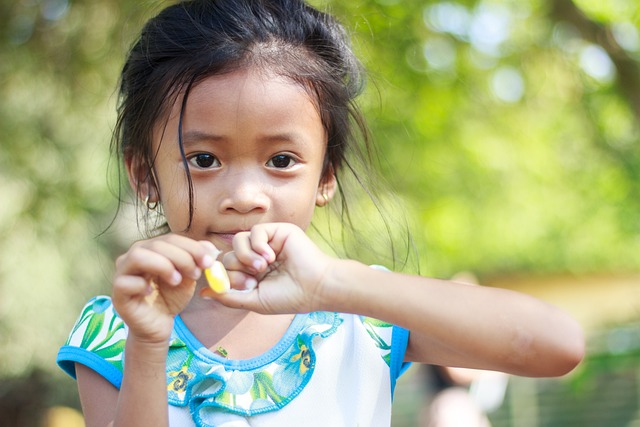Domestic violence severely impacts children's well-being, leading to long-term trauma. Protecting children from harm requires a multi-faceted approach: education on online safety and recognizing abuse, robust legal frameworks like child protection laws, community initiatives, and support systems fostering safe environments. This includes implementing safety measures at home, teaching children about threats and consent, and integrating family safety plans into school curricula. By combining safety education with strong laws, we can reduce child injury risk and create secure family environments, preventing potential abuse, especially in households affected by domestic violence.
Domestic violence casts a long shadow over childhood, impacting a child’s sense of safety and well-being. Understanding the scope of this pervasive issue and its far-reaching effects on young minds is crucial for breaking cycles of abuse. This article explores comprehensive strategies to address child safety, from practical tips for protecting kids at home to navigating digital risks online. We delve into the importance of child protection laws, safety education, and fostering environments that nurture resilience in vulnerable children, ultimately aiming to prevent child injury and ensure security within families.
Understanding the Scope of Domestic Violence and Its Impact on Children
Domestic violence is a pervasive and devastating issue that has profound effects on children, often leading to long-lasting trauma. It encompasses a range of abusive behaviours, including physical assault, emotional manipulation, and verbal abuse, occurring within the confines of a family or intimate relationship. When children are exposed to such environments, they face unique challenges and risks, making child safety tips and protection a paramount concern. Understanding the scope of domestic violence is crucial in recognizing its impact on kids’ well-being.
This phenomenon can result in various forms of harm, from emotional distress and anxiety to physical injuries and even long-term cognitive impacts. Children may struggle with trust issues, exhibit behavioural problems, or experience difficulties in forming healthy relationships. Protecting children from such trauma involves a multi-faceted approach, including robust child abuse prevention strategies, safety education for children, and the implementation of comprehensive family safety plans. Online safety for kids becomes increasingly important as digital spaces can also contribute to or perpetuate abusive dynamics. Ensuring child security requires a collective effort involving legal frameworks (like child protection laws), community initiatives, and support systems that foster safe environments.
Child Safety Tips: Protecting Kids from Harm at Home
Ensuring child safety at home is paramount to protect kids from harm and prevent potential abuse. Implementing robust child safety tips starts with creating a secure environment that fosters trust and resilience. This involves educating children about online safety, teaching them to recognize and report suspicious activities, and establishing clear family safety plans. Regularly reviewing and updating these strategies is essential as children grow and their understanding evolves.
Protecting children from harm at home also requires proactive measures like installing age-appropriate safety equipment, such as door locks and childproofing devices, especially in high-risk areas. Additionally, promoting open communication encourages kids to share fears or concerns without hesitation. By combining safety education for children with strong child protection laws, we can significantly reduce the risk of injury and create a more secure family environment.
Online Safety for Kids: Navigating Digital Risks and Vulnerable Children
In today’s digital era, online safety for kids has become a paramount concern in safeguarding children from harm and potential abuse. Children, especially those living in households affected by domestic violence, are increasingly vulnerable to various online risks. They may encounter inappropriate content, cyberbullying, or even be targeted by predators. Therefore, it is crucial to equip them with essential child safety tips and educate them about navigating the digital world securely. Implementing family safety plans that include monitoring tools and open communication can help protect children from online dangers.
Safety education for children should encompass not only teaching them about potential threats but also fostering a culture of respect and consent. By instilling these values, we can empower kids to make informed decisions and recognize situations where they might be at risk. Moreover, strengthening child protection laws and ensuring their enforcement is vital in creating a network of support that protects vulnerable children, especially those who may be exposed to domestic violence within their homes.
Fostering Safe Environments: Comprehensive Strategies for Child Protection Laws and Education
Creating safe environments is paramount in safeguarding children from domestic violence and its lasting effects. Comprehensive strategies must encompass both legal frameworks and educational initiatives. Strengthening child protection laws can deter abuse, provide legal recourse for victims, and mandate reporting mechanisms to ensure community accountability. These laws should prioritize the well-being of children, offering protective measures such as emergency shelters, counseling services, and access to legal aid.
Education plays a pivotal role in fostering safe environments. Implementing age-appropriate child safety tips and online safety programs can empower young minds to recognize potentially harmful situations and seek help. Teaching children about their rights, healthy relationships, and conflict resolution strategies equips them with essential tools for self-protection. Additionally, integrating family safety plans into school curricula ensures that students understand the importance of open communication, safe haven locations, and community resources, fostering a culture of resilience and support.
Protecting children from harm at home and online is a multifaceted endeavor that requires comprehensive strategies, robust child protection laws, and safety education. By understanding the scope of domestic violence and its impact on kids, we can implement effective child safety tips and online safety for kids. Fostering safe environments involves engaging in open dialogue about child abuse prevention, empowering children with knowledge, and creating strong family safety plans. Together, these efforts ensure the well-being and security of our most vulnerable populations.
